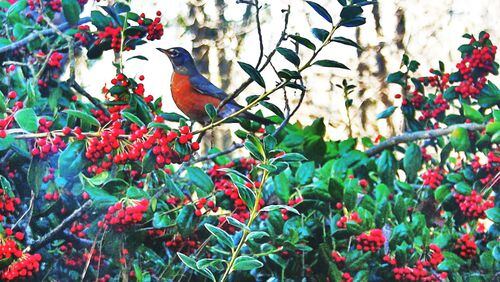Andy Williams crooned that Christmas is “the most wonderful time of the year.”
I agree.
I especially feel that way when I stroll through the woods and fields around Christmas, and see several of our native plants that, for me, have become part of the festive season. They include:
Hollies. With their shiny evergreen leaves and bright red berries, hollies are prime holiday icons. Our most familiar species, the American holly, which we called the "Christmas holly," grows throughout Georgia. My wife decorates our home with it, although its prickly leaves can cause an "ouch." When I was growing up on a South Carolina sea island, my mother decorated with a coastal species, the yaupon, or cassina, holly.
Red cedar. In my boyhood, our Christmas trees were red cedars that grew on small islands in the salt marsh. Each Christmas, we chopped down one of the trees and hauled it home in our little boat. To this day, the red cedar's fragrance reminds me of Christmas.
Pines. Like other rural Southerners, my mother placed small pine boughs on mantelpieces, tables, sideboards and elsewhere throughout the house for Christmas. Pine cones were spray-painted a silvery color for holiday decorating.
Mistletoe. The holidays would not be the same without mistletoe. Since mistletoe often grows high atop hardwood trees, we used shotguns to blast it from the treetops, causing it to fall to the ground or within safe climbing height. It was cut into sprigs and hung over doors at holiday time.
Wild grape vines. From tangles of dead vines hanging from tree limbs or growing along fences and ditches, we cut long strands of the vines and twisted them together into large rings. Painted pine cones, red ribbons, magnolia leaves and sprigs of holly, pine and other evergreens were attached to them to make colorful Christmas wreaths.
Wax myrtle or bayberry. Folklore said that if, on Christmas Eve, we lit a new candle made of wax myrtle berries, we'd have health and prosperity in the coming year.
Merry Christmas.
In the sky: From David Dundee, Tellus Science Museum astronomer: The moon will be new Thursday. Mercury and Venus are low in the west and Mars is low in the southwest at dusk. Jupiter rises in the east around midnight.






